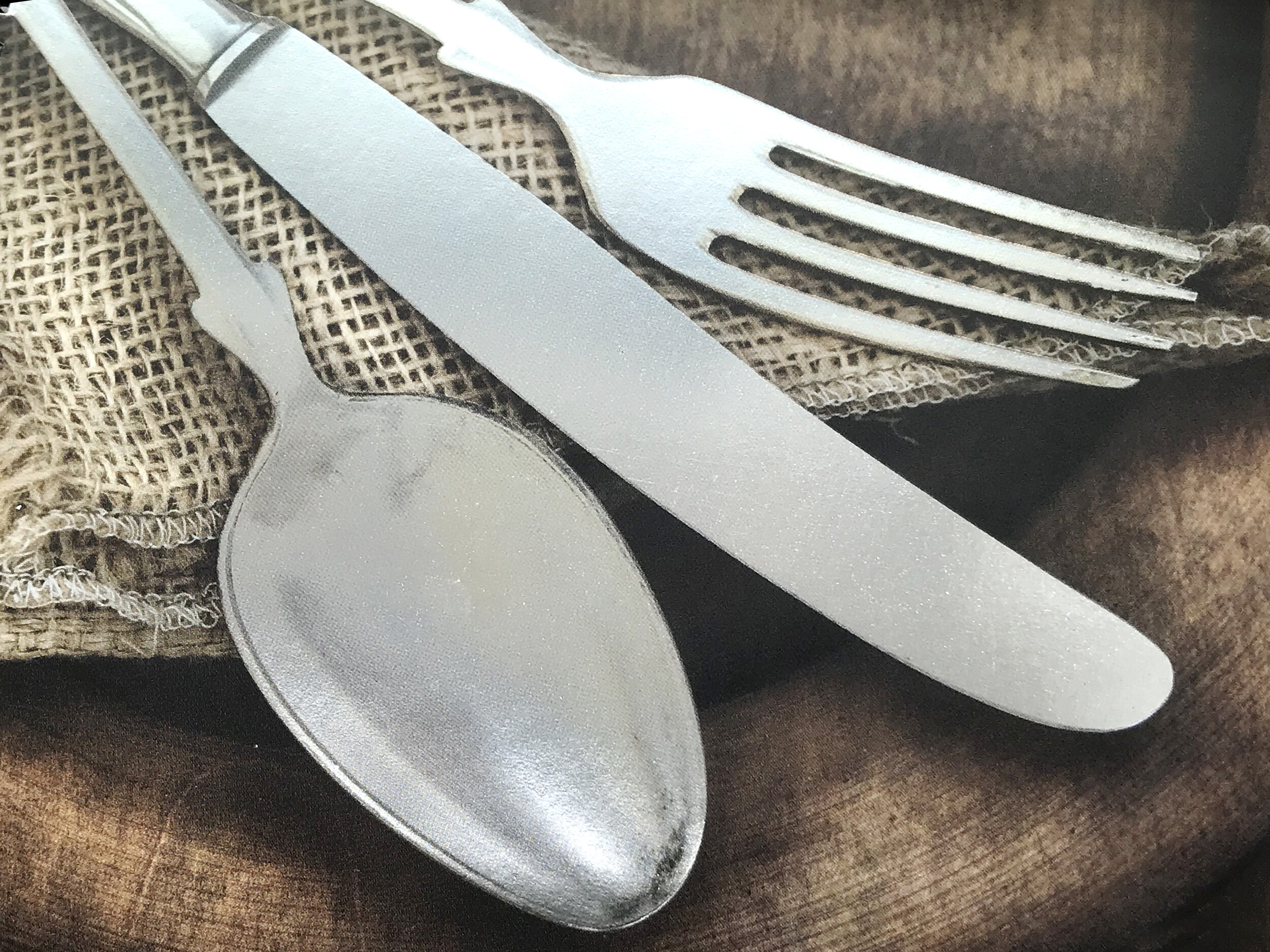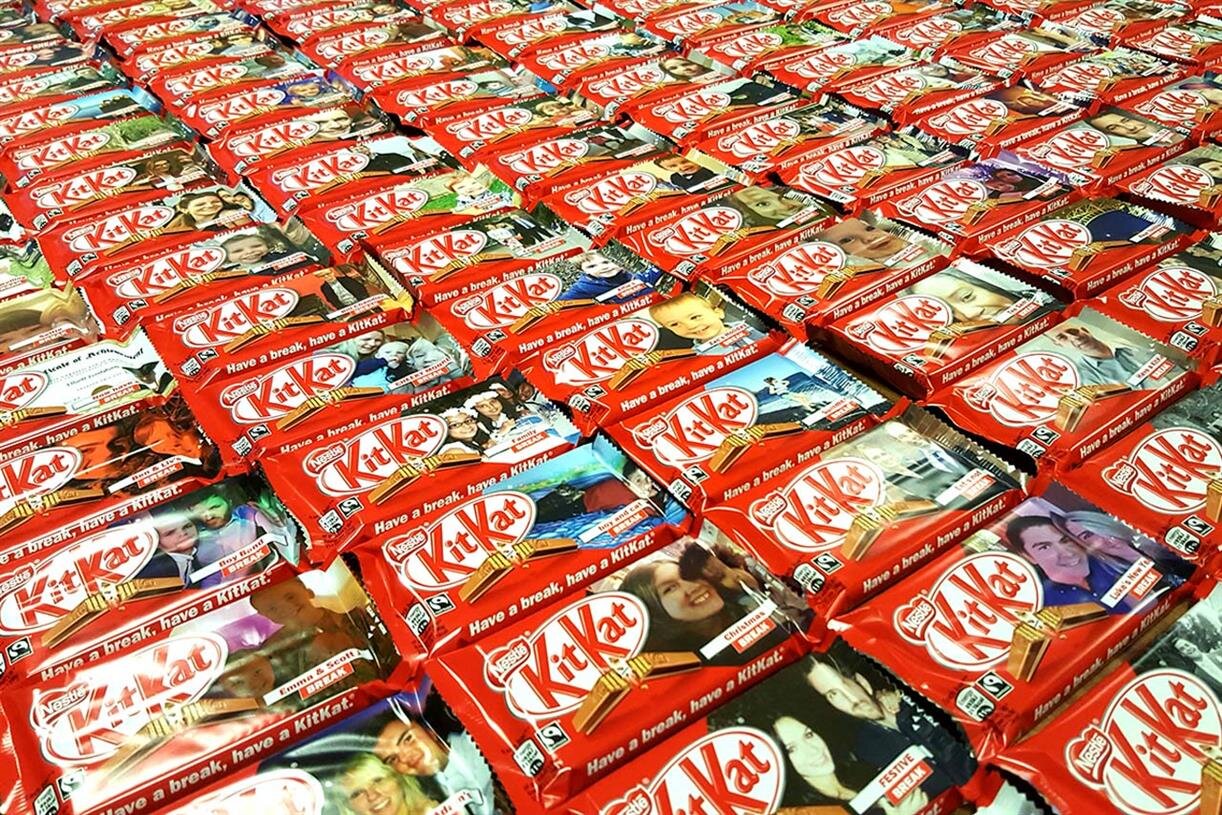8 Breakthrough Print Technologies Food Manufacturers Should Consider
/Eye-catching designs are one way to make your food packaging stand out on the shelf, but quality printing goes beyond what graphics alone can achieve. Traditionally, many of the specialty substrates, inks, and coatings were only available for offset printing, limiting the solutions available for small-to-medium sized brands. The following technologies provide alternatives that are more feasible for shorter production runs and are better suited to smaller brands.
Inject Some Personality with Variable Data
HP SmartStream Mosaic is a variable data plug-in that works with HP Indigo digital printing presses and allows users to create distinctive, reproducible patterns with a few base assets.
Personalization in print marketing is becoming a necessary factor if you want to make an impact with consumers. Food manufacturers are implementing this technology to create individualized and unexpected experiences. From chocolate packaging that transforms into a one-of-a-kind sculpture, to festive beer cans, and vibrant beverage labels brands are utilizing HP’s digital printing solution to craft seemingly complex campaigns that are full of flair with moderate effort.
Add a Foil Finish for a Touch of Luxury
Choosing a foil finish adds an eye-catching, high-end feeling to any print project. However, traditional foil can get expensive as dies, set up fees and quantity minimums add up. Enter Nobelus – a premier finishing company that manufactures thermal laminate film and equipment. Their technology bonds foil to digital ink, producing an equally dramatic effect at a much lower cost – no dies required! A variety of films can be applied to select areas or the entire piece and will accept an overprint of ink. Sleeking opens up a reasonable point of entry for small-to-medium-sized brands looking to elevate their impact on the shelf.
Engage the Senses with Tactile Finishes
Scodix Sense™ is a digital enhancement that engages consumers through a sensory experience. This tangible technology can really differentiate a brand. When the polymer is applied to a substrate, it adds depth and creates texture, similar to embossing or raised UV coating. Targeted application complements the design of a package or piece of marketing collateral and allows printed media to mimic a real surface. Particularly relevant to the food packaging world, this coating’s properties even allow it to absorb and emit a specific aroma to further a consumer’s sense of intrigue. (Photo courtesy of Scodix)
Boost Engagement with Augmented Reality
Integrating a digital component provides a host of benefits to any print campaign. This interactive element can bring a product to life in a real-world environment. Food manufacturers are using augmented reality to engage, educate and entertain consumers; the possibilities are limitless. Driving shoppers to a digital location enables brands to track invaluable data and develop a better understanding of their audience’s behaviors, wants and needs. (Photo courtesy of Packaging News)
Thermochromatic Inks Provide Protection
Perhaps more useful in the food and beverage industry than any other, thermochromatic ink reacts to shifts in surface temperature by appearing, disappearing, or changing color. Packages printed with thermochromatic inks can instantly tell the consumer whether the product inside is hot or cold. A 2013 Nielsen survey confirmed that consumers associate the temperature of a product with the quality of their overall experience with a brand. Not only can a brand communicate food safety at a glance, but thermochromatic inks can also be used to authenticate a product. (Photo courtesy of CTI Inks)
Maximize ROI with Online Software and Variable Data
Being a small manufacturer in the food industry can present a host of challenges; one of the most obvious is packaging. When product variety (i.e. – flavors) comes into play, brands need an affordable, reactive, and effective solution to communicate product variances across their line. Meeting astronomical production minimums or providing predetermined quantities are often not options for smaller brands. Traditional print methods are often inadequate and usually costly in this situation. However, the ever-expanding capabilities of digital presses offer boundless opportunities for producing unique runs, limited only by the extent of your creativity. Digitally printed packaging that utilizes variable data technology enables artwork and text to be modified to create many different versions of the same package. By pairing this art with a well-designed web-to-print online ordering platform, brands can send varying quantities to production on an as-needed basis. This comprehensive digital printing solution offers a means to control inventory, making the investment more manageable and reducing packaging waste. (Photo courtesy of PaperSpecs)
Withstand the Elements: Synthetic Stocks Ensure Your Branding Endures
Food products and their labels are exposed to a variety of elements during their journey to the shelf: from the manufacturing process, to transport through distribution channels, and then finally to end-user handling. A damaged package isn’t going to stand out on the shelf, making it harder to close the deal at the crucial point-of-sale. Consider incorporating a synthetic stock when designing labels, packages, and collateral that needs to withstand harsh and potentially messy conditions. Think beverage-label-in-an-ice-bucket type messy. Synthetics are water, spill, and stain-resistant as well as more durable and less likely to tear than paper. Many have been manufactured for superior ink adhesion, exceptional print quality, and a silky-smooth finish. This substrate is also dimensionally stable and extremely versatile.
Consider Other Impactful Alternatives to Add Value
Sleeking and Sense™ : These are two very specific, relatively new finishing techniques we’ve already discussed. However, traditional finishing methods, such as coating, die cutting, embossing and folding can be equally impactful, if your project has the budget to meet production requirements. Consider the following:
Reticulating Varnish: Create a subtle pattern or texture when a spot varnish + flood UV coating is applied to an offset print.
Soft Touch: This coating produces a velvety feel and is also resistant to scuff marks and fingerprints.
Die-cut: Shape your project into an unusual, compelling marketing tool. Whether you’re using die cuts to get a contour of a specific shape, create a peek-through window, increase aesthetic value or add function, a well-placed cut is sure to be eye-catching.
Embossing: Transform a flat surface into a three-dimensional form by giving select areas of a substrate a raised or sunken appearance.
Specialty Folds: Add a creative twist to your standard brochure, mailer, invitation and more with custom dielines that bring your brand to the cutting edge and deliver an experience your consumers will relish.
It’s easy to be overwhelmed by the wow-factor that these options provide. A tasteful combination can make just the right statement in your print marketing strategy. In addition to new and exciting technology, Water Street is well-versed in traditional print methods, making us a good fit for any sized company. Let us guide you through the process to find a solution that works best for your brand and can hold up against the test of time.








